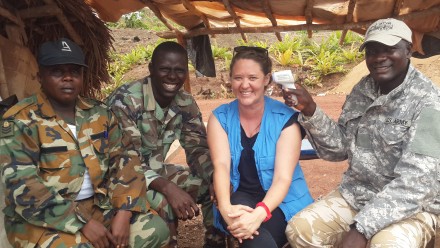Understanding barriers and facilitators of access to dental care and completion of treatment for Aboriginal adults
The general and oral health of the Aboriginal and Torres Strait Islander population of South Australia (SA) is significantly worse than the general population. As a consequence, Aboriginal and Torres Strait Islander oral health was identified as a priority in South Australia’s Oral Health Plan 2010 – 2017 and in Australia’s National Oral Health Plan 2015 – 2024.
Despite suffering poor oral health, prior to 2005 only a small percentage of Aboriginal people attended SA Dental Service clinics. Effective health promotion has the potential to play an important role in reducing oral health inequalities amongst Aboriginal people. Through the Aboriginal Liaison Program (ALP), partnerships have formed between the SA Dental Service and Aboriginal Health/Case Workers. These partnerships have been pivotal in raising the profile of oral health and increasing the acceptability of dental services among Aboriginal people, resulting in an increase in Aboriginal people accessing dental care.
The ALP began in late 2005 in response to an identified need to improve oral health outcomes for Aboriginal people in the SA metropolitan region. Four demonstration sites (Salisbury, Noarlunga, Parks and Port Adelaide) were selected based on population numbers provided by the Australian Bureau of Statistics. Funding was initially provided by the Central Northern Adelaide Health Service’s Health Improvement Pool. However, since then, the SA Dental Service has covered the cost of expanding the program and the increased number of courses of dental care.
Initial planning for the program involved consultation with the Executive Director of Aboriginal and Torres Strait Islander Health and with a number of key Aboriginal staff who provided an insight into the oral health needs and expectations of the community, and ways to assist people to access dental care.
One of the barriers identified initially was the two-year-plus waiting time for general dental care at the South Australian Dental Service’s Community Dental Clinics. As a result, one of the main objectives of the ALP has been to refer eligible Aboriginal adults to participating SA Dental Service Community Dental Clinics for priority dental care. Over the life of the ALP, several policy changes have enabled it to meet the needs of Aboriginal people. Currently, the Program is available to Aboriginal adults 18 years and over with a current Centrelink card. Clients receive free priority care (general and emergency) at all Community Dental Clinics in SA.
Since the ALP began in 2005 over 18,000 patients have visited a dental clinic for dental treatment. However, some clients who are referred do not take up the care while other clients begin a course of care but do not complete it.
Aim
This study aimed to understand why some Aboriginal adults who are referred for dental care do not take up or complete a recommended course of dental care. The study
- Explored why some Aboriginal adults take up a course of care after being referred and the perceived enabling and disabling factors and attitudes around beginning and completing a course of dental care.
- Has the potential to improve the practices of staff of the SA Dental Service in supporting Aboriginal clients in accessing dental care. It could also improve the communication about dental care available to Aboriginal people and thus improve their oral health and access.
Partnerships
- Kelly Jones, Research Fellow, Australian Research Centre for Population Oral Health
- D Keuskamp,
- A/Prof David S Brennan, Deputy Director, Australian Research Centre for Population Oral Health, School of Dentistry, the University of Adelaide
- Prof Kaye F Roberts-Thomson, Director, Australian Research Centre for Population Oral Health, School of Dentistry, the University of Adelaide






